

Three nice little groups crossed the Sun. Conditions here were poor but I managed a few pictures, largely through cloud, on two days, so below I show pictures of the whole sun and the three groups on the two days side by side. (If you have a wide-screen monitor it will be worthwhile to expand your window to full screen.) Conditions were so bad that it was not practicable to process all the images in just the same way, but at least you can see how the spots have appeared to move across the Sun and how the individual spots have changed in the 24 hours between the observations.
These three spots are at approximately the same latitude (15-20° north) so the Sun's axis is inclined significantly anti-clockwise relative to the vertical. My camera was aligned with the telescope which is itself aligned to the Earth's axis, so this inclination of the Sun's axis is relative to the Earth's axis. The Sun's equator is inclined to the ecliptic by about 7° and the Earth's equator is inclined by about 23½°. So we see the Sun's axis inclined by some combination of these two angles.
What, you may ask, happened to spot number 11262? This was a small spot which appeared near the eastern limb on 28 July and either disappeared or passed round the limb by 30 July. Sadly I also missed spot number 11264 which was tiny but appeared on 29 July at about 30 degrees south and disappeared on 2 August. For some reason I have few pictures of spots in the south, and none at such a high latitude.
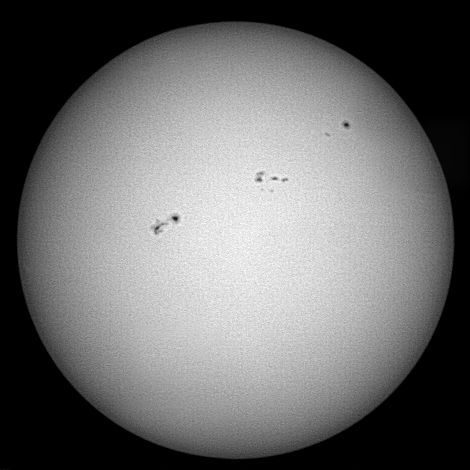
|
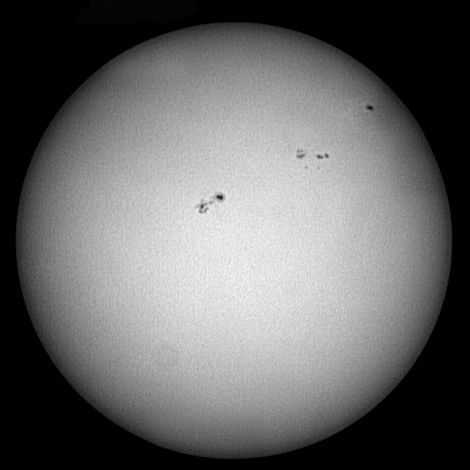
|
|
The whole Sun. Move your mouse pointer over the image to see the spots identified. Date and Time: 2 August 2011 11:26 UT Camera: DMK 21AF04 Telescope: 270 mm SLR Capture: ICCapture. Exposure 1/1477", gain auto, 3596 frames Processing: Registax5. 72 frames stacked. Wavelets 1,2 =10, histogram 60-230. |
The whole Sun. Move your mouse pointer over the image to see the spots identified. Date and Time: 3 August 2011 13:14 UT Camera: DMK 21AF04 Telescope: 270 mm SLR Capture: ICCapture. Exposure 1/1241", gain auto, 3600 frames Processing: Registax5. 92 frames stacked. Wavelets 1,2 =10, histogram 75-220. |
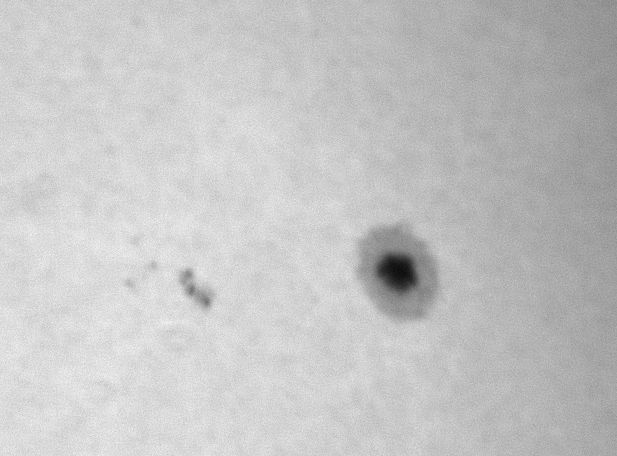
|
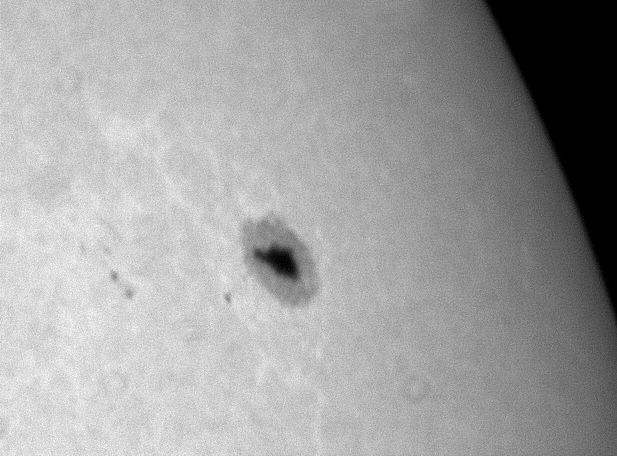
|
|
Group number 11260. This group first appeared close to the western limb on 25th July. Date and Time: 2 August 2011 11:48 UT Camera: DMK 21AF04 Telescope: LX200 Capture: ICCapture. Exposure 1/2959", gain auto, 1901 frames Processing: Registax6. 2 alignment points, 100 frames stacked per point. Wavelets 1-2 = 10. Histogram 10-130. |
Group number 11260. This group first appeared close to the western limb on 25th July. Date and Time: 3 August 2011 11:02 UT Camera: DMK 21AF04 Telescope: LX200 Capture: ICCapture. Exposure 1/2000", gain auto, 2550 frames Processing: Registax5. 109 frames stacked. Wavelets 1-2 = 10. Histogram 20-155. |
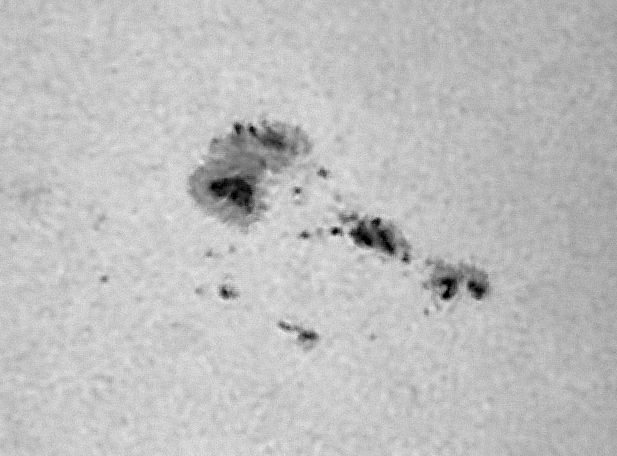
|
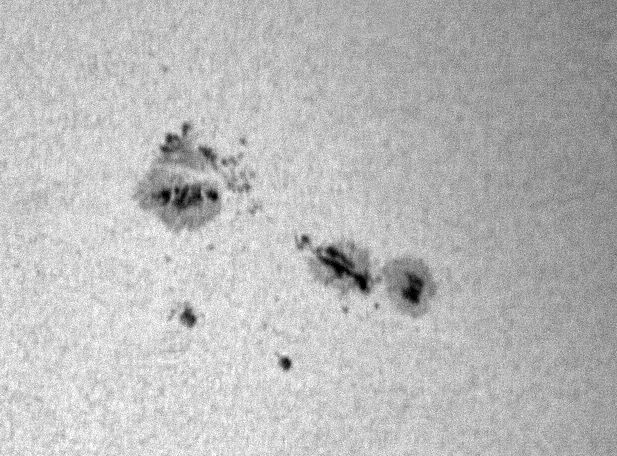
|
|
Group number 11261. This group first appeared around the western limb on 27th July. Date and Time: 2 August 2011 11:48 UT Camera: DMK 21AF04 Telescope: LX200 Capture: ICCapture. Exposure 1/2959", gain auto, 3596 frames Processing: Registax6. 3 align points, 100 frames per point stacked. Wavelets 1-2 = 10. Histogram 30-130. |
Group number 11261. This group first appeared around the western limb on 27th July. Date and Time: 3 August 2011 10:56 UT Camera: DMK 21AF04 Telescope: LX200 Capture: ICCapture. Exposure 1/2000", gain auto, 2480 frames Processing: Registax6. 5 align points, 100 frames per point stacked. Wavelets 1-2 = 10. Histogram 35-130. |
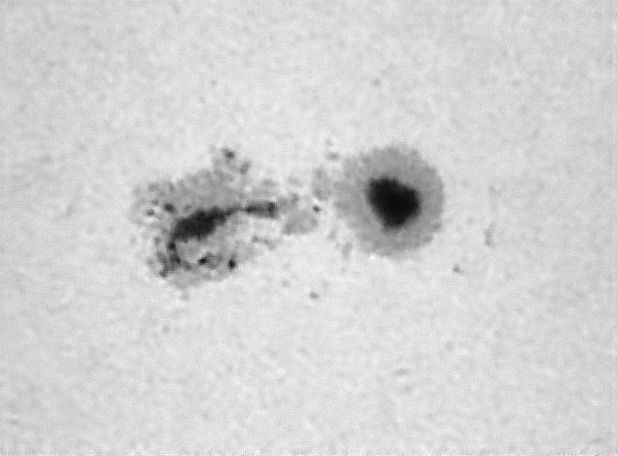
|
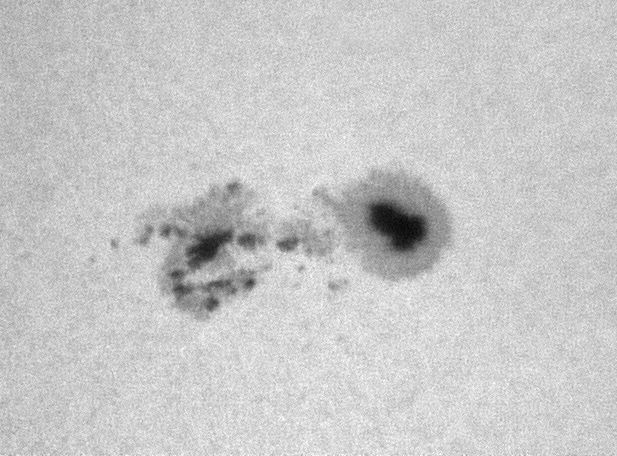
|
|
Group number 11263. This group first appeared around the western limb on 29th July. Date and Time: 2 August 2011 11:42 UT Camera: DMK 21AF04 Telescope: LX200 Capture: ICCapture. Exposure 1/2959", gain auto, 2762 frames Processing: Registax5. 660 frames per point stacked. Wavelets 1-2 = 10. Histogram 10-125. |
Group number 11263. This group first appeared around the western limb on 29th July. Date and Time: 3 August 2011 10:50 UT Camera: DMK 21AF04 Telescope: LX200 Capture: ICCapture. Exposure 1/2000", gain auto, 2473 frames Processing: Registax6. 4 align points, 63-85 frames per point stacked. Wavelets 1-2 = 10. Histogram 10-130. |
Home Back to Sun